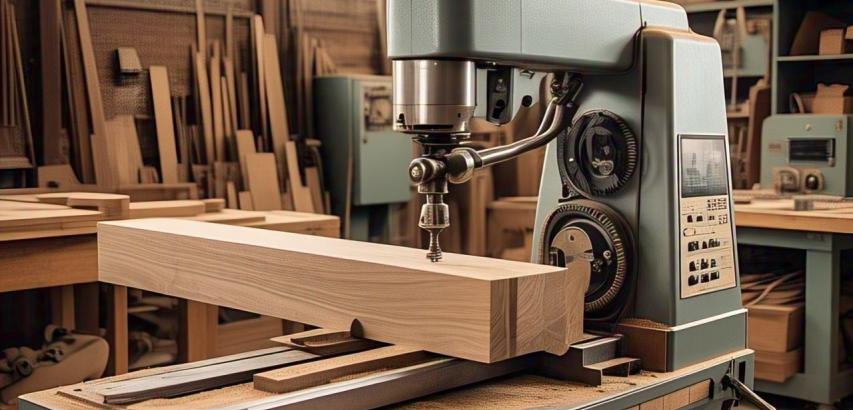A wood shaping machine is a specialized tool used to carve, cut, or mold wood into precise shapes and profiles, essential for crafting furniture, cabinetry, decorative moldings, and architectural elements. Combining traditional craftsmanship with modern automation, these machines enable woodworkers to achieve intricate designs, smooth finishes, and repeatable accuracy, revolutionizing both small-scale workshops and large manufacturing setups.
Key Features and Technology
Cutting Mechanisms:
Rotary Cutters: High-speed spinning blades or router bits for shaping edges, grooves, and contours.
Planer Heads: Adjustable blades for flattening or thinning wood panels.
CNC (Computer Numerical Control): Programmable systems that follow digital designs for 3D carving and complex geometries.
Adjustable Feed Systems:
Manual, power-fed, or automated conveyors that guide wood through the machine at controlled speeds.
Dust Collection:
Built-in vacuum systems to remove sawdust, enhancing safety and visibility.
Custom Jigs and Templates:
Guides and fixtures to ensure consistency in repetitive tasks.
Safety Features:
Emergency stops, blade guards, and kickback prevention mechanisms.
Types of Wood Shaping Machines
Spindle Shapers:
Vertical or horizontal machines with rotating spindles for edge profiling, dado cuts, and raised panels.
Planers/Thicknessers:
Flatten and smooth rough lumber to uniform thickness.
CNC Routers:
Computer-controlled machines for precision 3D carving, sign-making, and custom furniture.
Molders:
Industrial-grade machines producing long, continuous profiles for trim, flooring, or crown molding.
Band Saws and Scroll Saws:
For curved or freehand cuts in detailed woodworking.
Lathes:
Rotate wood to create symmetrical shapes like table legs or bowls.
Applications
Furniture Making: Crafting chair legs, table edges, and decorative accents.
Cabinetry: Producing door panels, drawer fronts, and custom joinery.
Architectural Millwork: Creating baseboards, window frames, and stair railings.
Musical Instruments: Shaping guitar bodies, violin scrolls, and piano components.
Art and Sculpture: Carving intricate designs or abstract forms.
Advantages
Precision: Achieve exact dimensions and repeatable results.
Efficiency: Reduce manual labor and production time.
Versatility: Handle diverse materials, including hardwoods, plywood, and MDF.
Complexity: Execute intricate patterns impossible with hand tools.
Scalability: Suitable for one-off custom projects or mass production.
Considerations
Cost: Industrial CNC routers or molders can exceed 50,000, while benchtop shapers start around 1,000.
Skill Requirements: CNC programming demands technical training; traditional shapers need hands-on expertise.
Space and Power: Larger machines require dedicated workshop space and high-voltage power.
Maintenance: Regular blade sharpening, lubrication, and calibration are essential.
Safety Risks: High-speed cutters pose injury risks without proper training and safeguards.
Popular Models and Brands
Felder Kombi-System: Modular machines combining planing, jointing, and shaping.
Powermatic PM2700 Spindle Shaper: A robust benchtop model for professional workshops.
ShopBot CNC Router: User-friendly CNC systems for small businesses.
Laguna Tools Revo Lathe: High-precision wood lathes for turning projects.
Weinig Hydromat: Industrial molders for high-volume production.
Innovations and Sustainability
Automation: AI-driven CNC systems optimize tool paths and material usage.
Eco-Friendly Practices: Energy-efficient motors and dust-recycling systems.
Hybrid Machines: Combine shaping, sanding, and finishing in one unit.
Augmented Reality (AR): Overlay digital templates onto workpieces for real-time guidance.
Wood shaping machines are the backbone of modern woodworking, merging artistry with engineering to transform raw timber into functional and aesthetic masterpieces. From the tactile control of spindle shapers to the digital precision of CNC routers, these tools empower artisans and manufacturers to push creative boundaries while maintaining efficiency and quality. While challenges like cost and complexity persist, advancements in automation and sustainability are making wood shaping more accessible and environmentally responsible. For woodworkers aiming to elevate their craft, investing in the right shaping machine unlocks limitless possibilities—turning imagination into tangible, enduring creations.
 |  |  |
